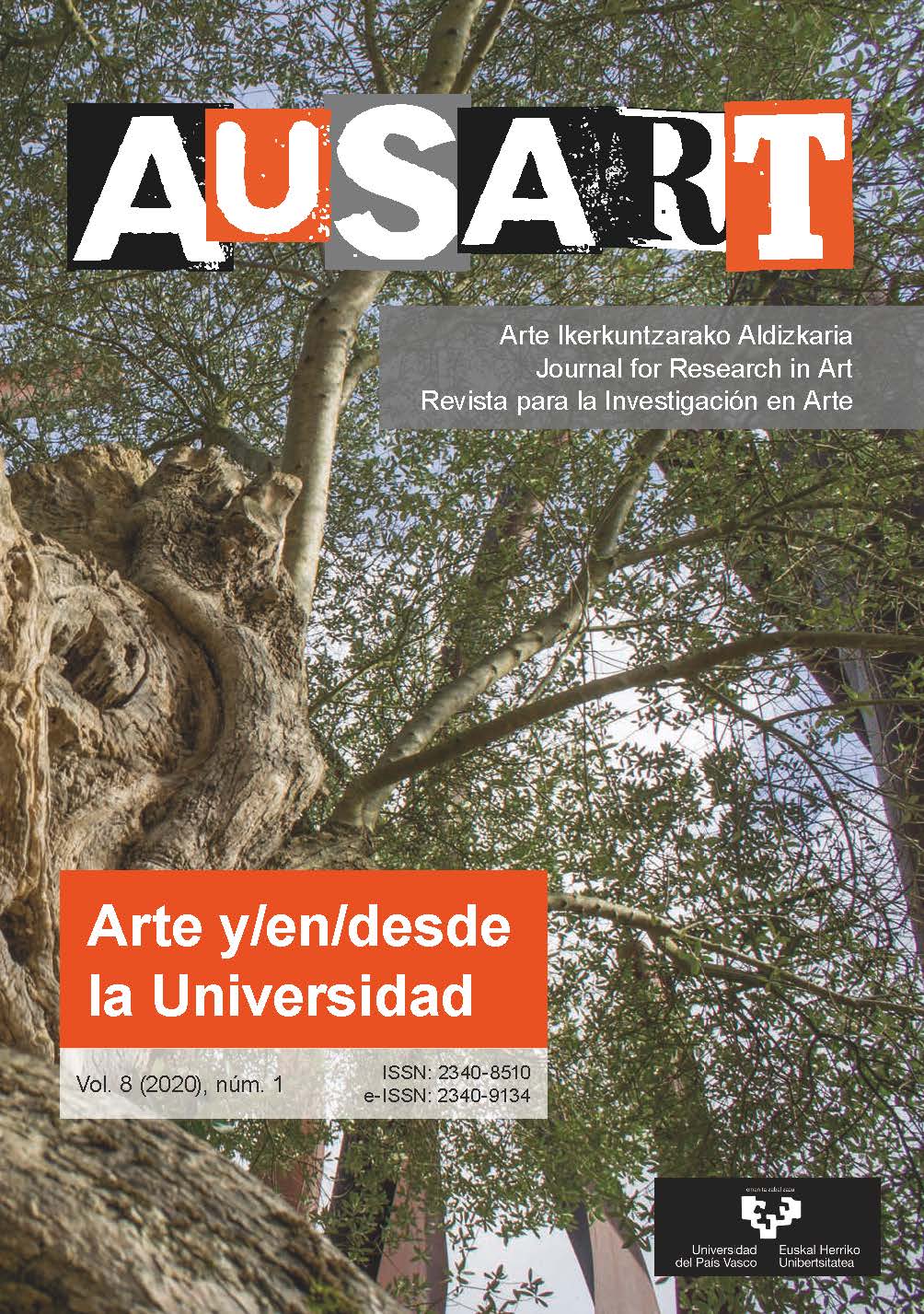An introduction to the impact of Bauhaus multi-disciplinary pedagogical model on its female students
##plugins.themes.bootstrap3.article.main##
##plugins.themes.bootstrap3.article.sidebar##
Publicado
30-06-2020
Marisa Vadillo Rodríguez
Resumen
The German school of the Bauhaus (1919-1933) had turned, in only fourteen years, into a pedagogic, investigative and artistic model. Their new improved pedagogical example is defined by the way in which their different academic programs were based on the multidisciplinary of the classical arts, which until then had been separately classified in painting, sculpture and architecture. The Bauhaus constructive ideal was at the service of society, hence, its pedagogical method was oriented towards the formation of professionals, so they would be able to master the knowledge that allowed them to design everyday objects, and to create an architecture style based on a single-family dwelling unit. In other to produce functional, cheap products that were full of spirituality, they based their programs on formal, plastic or aesthetic theories whose origin lies on the artistic thought. Society was changed due to their artistic creations.The artists that were educated in the Bauhaus changed the history of the modern design, imposing an educational model that opened the doors to the kind of multidisciplinary research that nowadays we still support in contemporary art centres. Accordingly, one of the Bauhaus' most affected sectors by the training and multidisciplinary research was the group of female students who were educated in this famous centre, being known today as artists of recognized international prestige. This group of students changed the society with their historical contributions about furniture, creation in lamps, textiles or household objects. Therefore, it brought out a significant number of artists as Marianne Brandt (1893-1983) in metal, Anni Albers (1899-1994) and her fabrics, Alma Buscher (1899-1944) with her toys, Wera Meyer-Waldeck (1906-1964) with her objects or Margarete Leischner (1907-1970) in textiles, among others.
Cómo citar
Vadillo Rodríguez, Marisa. 2020. «An Introduction to the Impact of Bauhaus Multi-Disciplinary Pedagogical Model on Its Female Students». AusArt 8 (1). https://doi.org/10.1387/ausart.21527.
##plugins.themes.bootstrap3.article.details##
References
Baumhoff, Anja. 2001. The gendered world of the Bauhaus: The politics of power at the Weimar Republic’s premier art institute 1919-1932. Frankfurt: Peter Lang
Droste, Magdalena. 1998. Bauhaus 1919-1933. Köln: Taschen
Graeve, Inka. 2003. «Today is tomorrow and yesterday: The photographer Ellen Auerbach». In Ellen Auerbach, la mirada intuitiva: Colección Archiv der Akademie der Künste de Berlin; Exposición organizada y producida por la Fundación La Caixa. Barcelona: Fundació La Caixa
Hervás y Heras, Josenia. 2015. Las mujeres de la Bauhaus: De lo bidimensional al espacio total. Buenos Aires: Diseño
Leischner, Margaret. 1968. «The Bauhaus a legend?». Journal of the Royal Society of Arts 116
Mandelbaum, Juan. 1995. Ringl and Pit. Produced by Geovision. Vimeo video, 59:00. https://vimeo.com/397553978
Scheper, Lou. 1985. «Retrospective». In Bauhaus und Bauhäusler: Erinnerungen und Bekenntnisse, herausgegeben von Eckhard Neumann. Köln: DuMont
Scheper, Renate. 2005. «Die Geschichte der Werkstatt für Wandmalerei am Bauhaus [The history of the wallpainting workshop at the Bauhaus]». In Farbenfroh! Die Werkstatt für Wandmalerei am Bauhaus [Colourful! The wallpainting workshop at the Bauhaus}. Berlin: Bauhaus-Archiv
Vadillo Rodríguez, Marisa. 2010. Otra mirada: Las fotógrafas de la Bauhaus. Sevilla: Universidad de Sevilla
Vadillo Rodríguez, Marisa. 2016. Las diseñadoras de la Bauhaus: Historia de una revolución silenciosa. Córdoba: Cántico
Wick, Rainer K. 2000. Teaching at the Bauhaus. With a text by Gabriele Diana Grawe. Ostfildern-Ruit: Hatje Cantz
Droste, Magdalena. 1998. Bauhaus 1919-1933. Köln: Taschen
Graeve, Inka. 2003. «Today is tomorrow and yesterday: The photographer Ellen Auerbach». In Ellen Auerbach, la mirada intuitiva: Colección Archiv der Akademie der Künste de Berlin; Exposición organizada y producida por la Fundación La Caixa. Barcelona: Fundació La Caixa
Hervás y Heras, Josenia. 2015. Las mujeres de la Bauhaus: De lo bidimensional al espacio total. Buenos Aires: Diseño
Leischner, Margaret. 1968. «The Bauhaus a legend?». Journal of the Royal Society of Arts 116
Mandelbaum, Juan. 1995. Ringl and Pit. Produced by Geovision. Vimeo video, 59:00. https://vimeo.com/397553978
Scheper, Lou. 1985. «Retrospective». In Bauhaus und Bauhäusler: Erinnerungen und Bekenntnisse, herausgegeben von Eckhard Neumann. Köln: DuMont
Scheper, Renate. 2005. «Die Geschichte der Werkstatt für Wandmalerei am Bauhaus [The history of the wallpainting workshop at the Bauhaus]». In Farbenfroh! Die Werkstatt für Wandmalerei am Bauhaus [Colourful! The wallpainting workshop at the Bauhaus}. Berlin: Bauhaus-Archiv
Vadillo Rodríguez, Marisa. 2010. Otra mirada: Las fotógrafas de la Bauhaus. Sevilla: Universidad de Sevilla
Vadillo Rodríguez, Marisa. 2016. Las diseñadoras de la Bauhaus: Historia de una revolución silenciosa. Córdoba: Cántico
Wick, Rainer K. 2000. Teaching at the Bauhaus. With a text by Gabriele Diana Grawe. Ostfildern-Ruit: Hatje Cantz
Sección
Artículos

Esta obra está bajo una licencia internacional Creative Commons Atribución-CompartirIgual 4.0.

Atribución-CompartirIgual 4.0 Internacional (CC BY-SA 4.0)
Usted es libre de:
- Compartir — copiar y redistribuir el material en cualquier medio o formato
- Adaptar — remezclar, transformar y construir a partir del material para cualquier propósito, incluso comercialmente.


 http://orcid.org/0000-0003-0708-4596
http://orcid.org/0000-0003-0708-4596